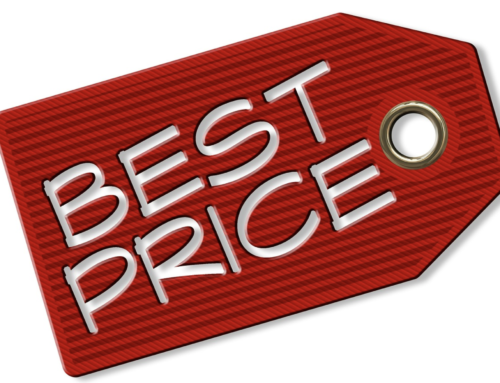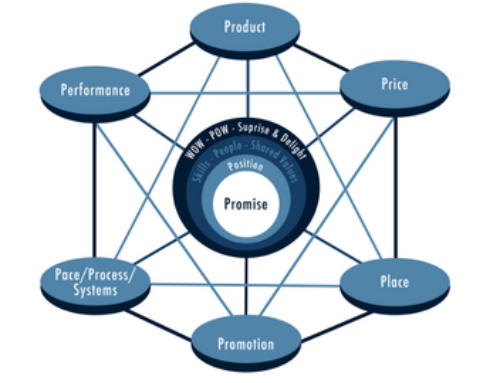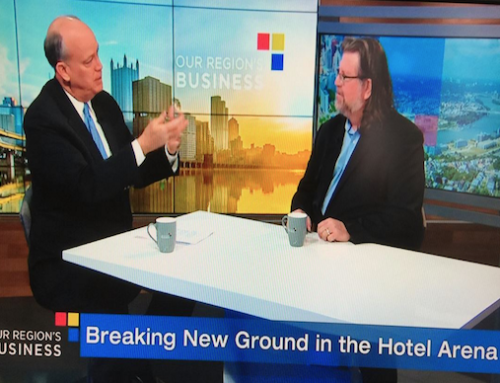 I’ve always been a big fan of Tom Peters of ‘In Search of Excellence‘ fame and its because of him that I’ve studied McKinsey a ton. In fact, in many ways I’ve worked hard to build BrandMill as a mini marketing consulting model of the firm – and have always loved McKinsey’s 7-S Framework (developed by Waterman and Peters) too.
I’ve always been a big fan of Tom Peters of ‘In Search of Excellence‘ fame and its because of him that I’ve studied McKinsey a ton. In fact, in many ways I’ve worked hard to build BrandMill as a mini marketing consulting model of the firm – and have always loved McKinsey’s 7-S Framework (developed by Waterman and Peters) too.
At the recommendation of Peters via a Blog post, I read a few books from former McKinsey employee Ethan Rasiel – ‘The McKinsey Way’ and ‘The McKinsey Mind.’ These books were a great help to me (still are) in building the processes of my marketing practice.
One little nugget that was worth a ton to me, was Rasiel’s insight about how company’s price their products. In short, McKinsey believes most companies price too low because they haven’t taken steps to quantify their value – to prove and clearly communicate their worth.
TELEGRAM ONE – Most brands need to do a far better job at value creation and value communication!
TELEGRAM TWO: Raising prices is the easiest, simplest and least expensive way to profitably increase sales!
McKinsey argues that most brands price too low because they haven’t done enough work to prove (offer real proof – or make brand improvements to add additional proof) that their products or services should demand a higher price. So, most brands lower and lower their price or, discount and discount to a level that customer’s will say, ‘OK, that price seems reasonable.’
In our initial brand engagements we nearly always find two alarming opportunities to profitably build a small business.
First, most brands simply price their products and services following the traditional cost-plus (mark-up) model and never consider these other 10+ ways to find their right price.
12 Pricing Models
- Cost-Plus Pricing – building price up from cost ‘floor’ generally on a percentage basis
- Elasticity Pricing – pricing to take advantage of known or perceived price elasticity or inelasticity
- Flexible Pricing – Pricing to meet changing competitive/marketplace conditions
- Follow Pricing – Pricing in relation to industry price leaders
- Loss-leader Pricing – Pricing an item/items low to attract buyers for other products
- Phase-out Pricing – Pricing ‘high’ to remove a product from the line
- Penetration Pricing – Pricing below the prevailing level in order to gain market entry or to increase market share
- Pre-emptive Pricing – Pricing to discourage competitive market entry
- Psychological Pricing –Pricing at a level that ‘sounds’ much lower than it is like $99.95
- Segment Pricing – Pricing essentially the same products differently to various markets
- Skim Pricing – pricing at inordinately high level to hit the ‘cream’ buyers
- Slide-down Pricing – Moving prices down to tap successive layers of demand
…and more here – and more good stuff on pricing here too.
Plus, value-based pricing packages and pricing and revenue management software tools for dynamic pricing rock too!
Second, we find that most small business brands have a tremendous opportunity to improve their unique ‘WOW’ experience (a bigger, more unique and meaningful ‘WOW’ – clearly communicated – should justify a higher price), but lack the process/es and/or a desire to raise their bar of excellence because they get caught up in the day-to-day business at hand.
Face the facts.
You can’t control what your government or competitors do to negatively impact your small business (so stop your whining), but you can control and lead your brand to more profitable times with an improved approach to pricing and innovation.
Right?
Ok – back to pricing.
There’s certainly not enough time/space in this blog post to cover all you need to know about it (hey, we’re happy to help – just call us at 412.401.0555 – or email me at stephen.wayhart@brandmill.com), but we recommend that you make time to improve your ‘WOW’ (The Experience Economy is an oldie but goodie) and read a few good pricing books (and study hard) to help you more effectively do it.
Here are three excellent pricing books we highly recommend.
- Full Price, by Winninger
- Pricing for Profit, by Furtwengler
- The Price Advantage, by Baker, Marn and Zawada
We wish you good luck and great marketing!








